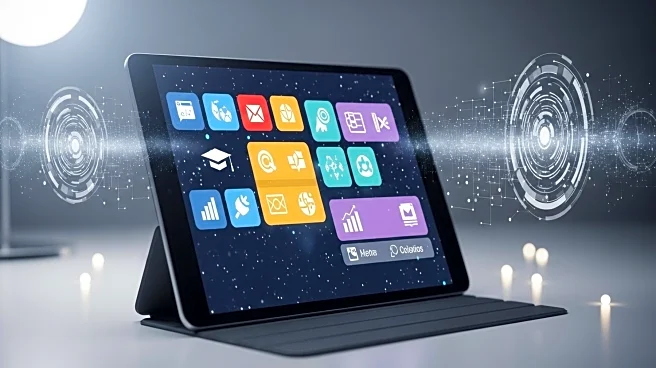What's Happening?
The Education Development Center, in collaboration with WGBH Education Foundation and Digital Promise, has launched a project using augmented reality to teach preschoolers spatial awareness. The initiative involves an eight-week curriculum that combines digital games, read-alouds, and hands-on activities. Preschoolers interact with a character named Gracie, who guides them through mazes and maps displayed on tablets or in classrooms. The project aims to develop spatial thinking, a foundational skill for future STEM learning, which is often overlooked in early education. Feedback from teachers has been integral in refining the curriculum, ensuring it is engaging and accessible for young children.
Why It's Important?
Spatial awareness is crucial for success in STEM fields, yet it is often neglected in early childhood education. By integrating augmented reality into learning, the project provides a novel approach to teaching this skill, potentially improving educational outcomes for preschoolers. The initiative could lead to broader adoption of technology in early education, enhancing engagement and learning effectiveness. Teachers and students stand to benefit from this innovative curriculum, which offers interactive and fun learning experiences, fostering a strong foundation for future academic pursuits.
What's Next?
The project is expected to continue evolving based on classroom feedback, with potential expansion to more schools. Researchers aim to further adapt the curriculum to meet diverse educational needs, possibly influencing early childhood education standards nationwide. As the program gains traction, it may inspire similar initiatives, encouraging the integration of technology in teaching spatial awareness and other critical skills.
Beyond the Headlines
The use of augmented reality in education raises questions about the balance between screen time and traditional learning methods. While technology can enhance learning, it is essential to ensure it complements rather than replaces hands-on experiences. The project also highlights the importance of teacher involvement in curriculum development, emphasizing the need for adaptable educational tools that cater to varied classroom environments.










